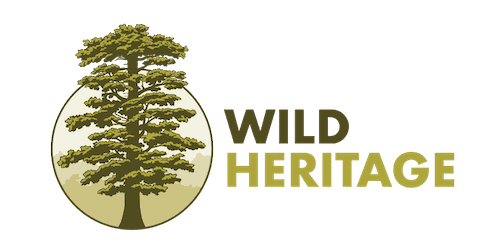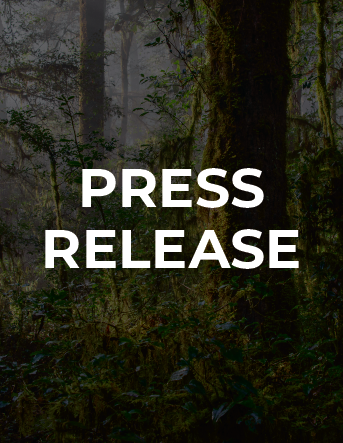New Study Provides First-Ever Map-Based Assessment of Continental US Mature and Old-Growth Forests
Inventory assesses the vital climate, carbon, and biodiversity values of older forests, as well as the threats they face from logging.
MEDIA CONTACT:
Dr. Dominick A. DellaSala (541-621-7223; dominick@wild-heritage.org)
Dr. Brendan Mackey (b.mackey@griffith.edu.au)
Dr. Brendan Rogers (maddie@ninetywest.com)
TALENT, OR – September 28, 2022 – Today, an international team of scientists released the first ever coast-to-coast, map-based assessment of mature and old-growth forests (i.e., collectively referred to as older forests) in the continental United States, in a new peer-reviewed study published by Frontiers in Forests and Global Change.
The nation’s older forests foster extraordinary levels of biodiversity and play a key role in sequestering and storing massive amounts of carbon, thus serving as a vital natural climate solution. But due to decades of land development and logging, old-growth forests in the continental U.S. have declined to a fraction of their original extent. Fortunately, many areas are maturing from past logging and if protected can begin to restore the nation’s old-growth deficit. On the heels of two executive orders from the Biden Administration aimed at protecting at least 30% of all lands and waters and conserving older forests, this new assessment provides a first-of-its-kind blueprint for quantifying and mapping older forests that can inform national policies on forests and climate change.
Using processed satellite images to identify three structural measures relevant to forest maturity — canopy height, canopy cover, and above ground living biomass (amount of live vegetation) — scientists found that older forests make up approximately 167 million acres, or 36%, of all forests in the contiguous 48 states. 35% of these forests are on federal lands managed by the U.S. Forest Service, the Bureau of Land Management (BLM), and National Park Service, while the rest exist on lands owned by non-federal entities. While older forests in National Parks are fully protected from logging, only 24% of national forests and BLM lands — which make up the majority of federally-managed forests — have similar protections.
The study identified some 50 million acres of older federal forests as at-risk from logging. These vulnerable forests store the equivalent of 10.6 gigatonnes of carbon dioxide which, if cut down over a decade, would emit the equivalent of 9% of U.S. annual greenhouse gasses.
“Our study confirms the outsized role that the nation’s older forests play in addressing the global climate and biodiversity crises,” said lead author Dr. Dominick A. DellaSala, Chief Scientist with Wild Heritage. “Protecting older forests from logging on federal lands is critical to President Biden’s plan to reduce greenhouse gas emissions by 50-52% of 2005 levels by 2030. By avoiding emissions from logging, carbon is retained in the forest and not sent to the atmosphere, which would increase global warming and climate impacts.”
“Assessments like this one are key to advancing primary and older forest protection policies globally, especially as nations prepare for the upcoming international biodiversity and climate summits later this year,” said Dr. Brendan Mackey, Professor at Griffith University and study co-author. “The U.S. has an opportunity to serve as a global leader in demonstrating to all nations that protecting older natural forests is an essential part of the climate solution, along with the rapid transition off fossil fuels.”
Scientists compiled previously-derived high-resolution 3-D laser ranging imagery (LiDAR) from the Global Ecosystem Dynamics Investigation (GEDI) along with existing independent and validated datasets on the amount of forest canopy cover and live aboveground vegetation (biomass) to assign structural development classes to all major forest types in the continental U.S. Forests were grouped as structurally young, intermediate, and advanced (i.e., older) with the rankings verified using thousands of field plots from the US Forest Service Forest Inventory and Analysis dataset. As they age, forests increasingly develop tall canopies, large trees with longevity, complex understories, and they accumulate massive amounts of carbon. These advanced structural features in older forests typically emerge around 80 years of age. The large trees in older forests are also capable of resisting wildfires due to their thicker bark and self-pruning of lower branches as they age.
“This study is the first ever national assessment of the strategic importance that older forests play in U.S. climate strategies,” said Dr. Brendan Rogers, scientist at the Woodwell Climate Research Center and study co-author. “It advances much-needed efforts to provide a science-based definition of older forests on which protections can be based.”
The study builds on research published earlier this year, which showcased Alaska’s Tongass rainforest as one of the nation’s top natural climate solutions due to extensive old-growth forests. This work is part of a global effort to map the world’s dwindling primary and old-growth forests led by Dr. Mackey, in partnership with a team of scientists from Wild Heritage, Woodwell Climate Research Center, and NatureServe.
The full study and its findings can be accessed here. Maps of continental US mature forests can be found at matureforests.org


